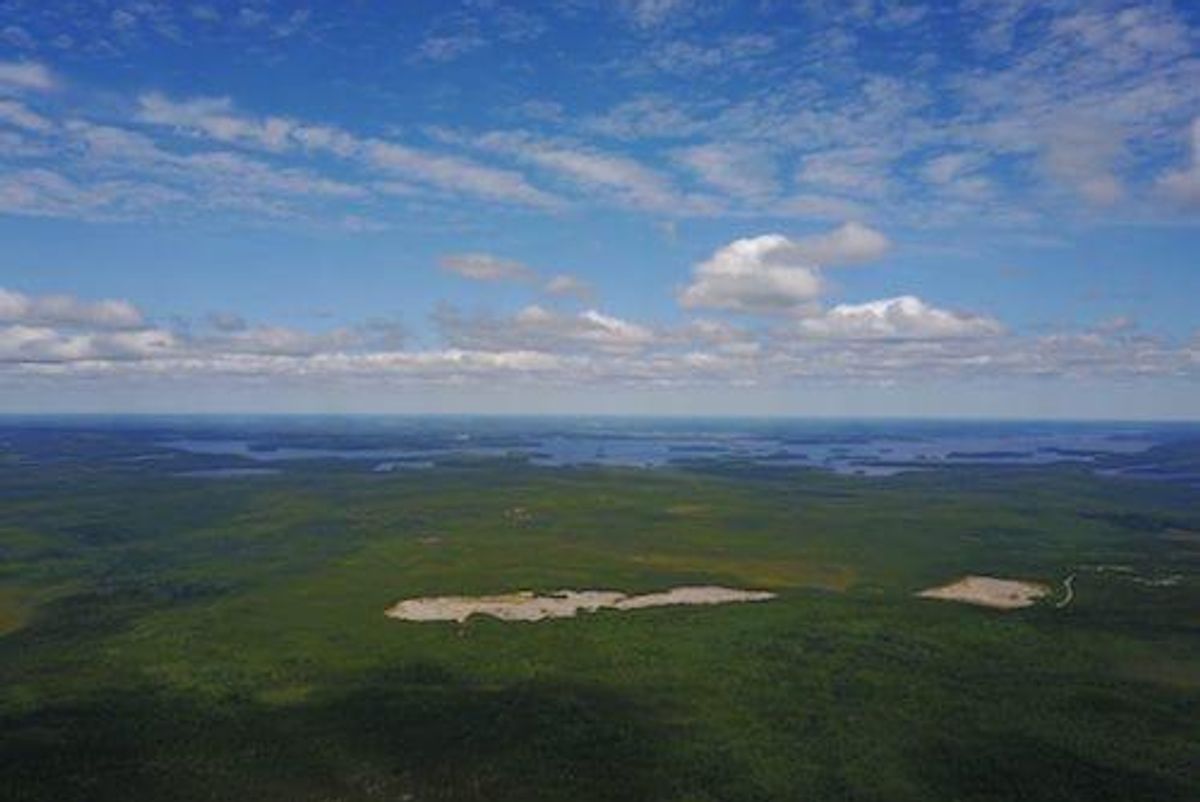Great Bear Surges on New High-grade Gold Discovery

Great Bear Resources climbed close to 20 percent after discovering a new high-grade gold zone at its Dixie project.
Great Bear Resources (TSXV:GBR,OTCQB:GTBDF) rose close to 20 percent on Tuesday (May 28) after discovering a new high-grade gold zone at its Dixie project in the Red Lake District of Ontario.
Highlights from the new discovery, called the Bear-Rimini zone, are 12.33 grams per tonne (g/t) gold over 14 meters, including 30.9 g/t gold over 4.6 meters, and 194.21 g/t gold over 2 meters, including 759.38 g/t gold over 0.5 meters. Bear-Rimini is part of a new exploration target called the LP fault.
“After recognizing a significant hydrothermal alteration zone in our previous round of regional drilling, we tested and discovered, in our first hole, a new zone of shallow high-grade gold associated with silicification of host rocks related to a crustal-scale structure we call the LP Fault,” said Chris Taylor, president and CEO of Great Bear.
The Canadian company believes that the LP fault cuts across the property for a strike length of about 18 kilometers. It lies parallel to Highway 105, which is the main access corridor to Red Lake and is approximately 30 minutes away from the main Red Lake gold mine currently operated by Newmont Goldcorp (TSX:NGT,NYSE:NEM).
Bear-Rimini is one of the many discoveries that Great Bear hopes to make as it continues with its 60,000 meter drill program, which is expected to last for the duration of 2019. The miner added a second drill rig in early 2019, with a third drill rig expected in the near future in order to accelerate work.
Currently, the program has another 40,000 metres of drilling remaining.
“The new Bear-Rimini Zone joins the Hinge Zone as a significant new gold discovery and will be an additional focus of drilling through the remainder of 2019,” Taylor noted.
This is not the first time the company has experienced a significant share price increase following drill results from its Dixie project. Shares of Great Bear rose over 20 percent on January 16, when the company reported impressive drill results at the Hinge and South Limb zones, with results such as 1,602.73 g/t gold over 0.7 meters (approximate true width) at 150 meters vertical depth.
“Our Hinge and South Limb zone are part of a continuous gold vein system which is interpreted to extend along 300 metres in strike length and has been drill tested to a depth of 212 metres,” Taylor said when that discovery was made.
Additionally, on August 22 of last year, the miner closed the day up 63.89 percent after reporting a new high-grade gold discovery at the Hinge zone.
“Our first hole, DHZ-003, encountered a wide interval of quartz veining with visible gold and we immediately followed up with a second hole, DHZ-004, which also hit the zone and encountered even stronger grades,” R. Bob Singh, director and vice president of exploration, said at the time.
Later that same month, the company announced that Rob McEwen, chairman and chief owner of McEwen Mining (TSX:MUX,NYSE:MUX), would be purchasing C$4.8 million of Great Bear’s C$10 million private placement deal. Additionally, McEwen Mining agreed to purchase C$1.2 million of the financing for a total of C$6 million.
McEwen and McEwen Mining now collectively own 18.8 percent of Great Bear Resources on a partially diluted basis.
The company’s performance in 2018 pushed it up over 550 percent for the period, putting it on the Investing News Network’s list of top junior gold stocks of the year.
As of 2:50 p.m. EDT on Wednesday (May 29), Great Bear was up 7.95 percent, trading at C$3.80.
Don’t forget to follow us @INN_Resource for real-time news updates!
Securities Disclosure: I, Nicole Rashotte, hold no direct investment interest in any company mentioned in this article.
Editorial Disclosure: Great Bear Resources is a client of the Investing News Network. This article is not paid-for content.




